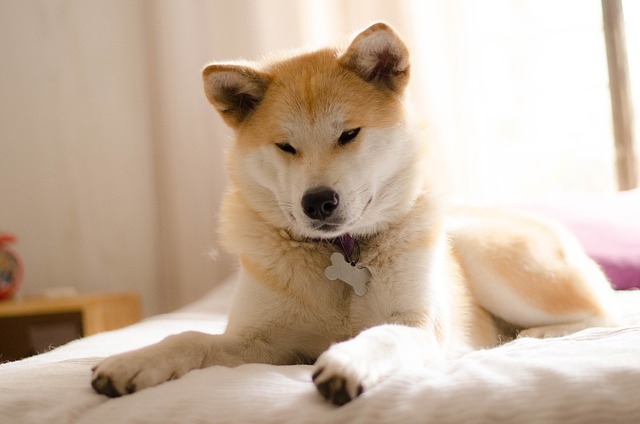
How can I tell if my dog's heatstroke is serious
Let’s be real: It’s a sticky August morning in Los Angeles, and you took your 2-year-old Golden Retriever, Max, for a walk a little later than usual
The warm living room is bathed in sunshine. When you hold a nail clipper and try to get close to your dog, the dog tries to dodge in fear and even roars softly. I believe many dog owners have experienced such a scene. Dogs are our most loyal companions in life, bringing us endless joy and companionship. But when it comes to cutting their nails, it often triggers a 'human dog war'. With a deep concern for dogs and professional knowledge, let's explore together the reasons behind dogs' unwillingness to cut their nails.
By nature, dogs' paws are important defense and perception organs. In the wild environment, claws help them capture prey, dig caves, mark territories, and keenly perceive changes in the surrounding environment. Claws are as important to dogs as our hands and feet. When we approach with nail clippers, dogs instinctively perceive it as a threat, and out of their self-protection instincts, they resist nail clippers. Imagine if someone suddenly approaches our hands and feet with a sharp weapon, we will also feel fearful, and dogs will do the same.
Many dogs' resistance to nail trimming stems from unpleasant experiences. Perhaps during a nail cutting, the owner accidentally cut the dog's blood line, causing pain and bleeding. This painful experience will leave a deep trauma in the memory of dogs, causing them to develop fear and resistance towards nail cutting. Even if the owner becomes more careful in the future, the dog will remember the pain it experienced when it sees a nail clipper and refuse to cooperate. In addition, during the process of trimming nails, some owners may act roughly or forcefully hold onto their dogs while they struggle in order to complete it as soon as possible. This method not only makes dogs feel uncomfortable, but also exacerbates their aversion to nail trimming.
The nail structure of dogs is quite unique, with blood lines distributed inside the nails. The blood line contains abundant blood vessels and nerves, and once the blood line is cut, the dog will suffer severe pain. For owners who are not familiar with the structure of dog nails, it is difficult to accurately grasp the position of nail trimming, which can easily cut blood lines and cause harm to the dog. Dogs also have a fear of nail trimming due to experiencing such pain. Moreover, the growth rate and structure of nails vary among different breeds of dogs. For example, the nails of small dogs are relatively thin, and the blood line may be closer to the tip of the nails; Large dogs have thicker nails and relatively deeper blood lines. This requires owners to understand the breed characteristics of their dogs in order to better trim their nails.

In addition to physiological and psychological factors, the current emotional and physical state of dogs can also affect their acceptance of nail trimming. When dogs are in a state of tension, anxiety, or illness, their sensitivity increases and their resistance to nail cutting becomes stronger. For example, if a stranger comes to the house and the dog feels uneasy, forcibly cutting their nails will only make the dog more resistant. Alternatively, if the dog is physically uncomfortable and already feeling restless, the act of cutting their nails will make them even more uncomfortable.
To better understand the reasons why dogs are unwilling to cut their nails, we need to think from their perspective. Every dog has its own unique personality and experiences, and their reactions to nail cutting are also different. As owners, we cannot beat or scold our dogs just because they don't cooperate. Instead, we need to patiently identify the root cause of the problem and guide them in the right way.
Watching the dog tremble with fear as it cuts its nails, our hearts are filled with heartache. Dogs accompany us with pure love, and when they face the trouble of cutting their nails, we need to use more patience and care to resolve their fears. Understanding the reasons why dogs are unwilling to cut their nails is the first step in solving the problem. Only in this way can we make dogs feel cared for instead of afraid when cutting their nails, and write warm and touching stories between humans and dogs.

Let’s be real: It’s a sticky August morning in Los Angeles, and you took your 2-year-old Golden Retriever, Max, for a walk a little later than usual

You're enjoying a summer afternoon at the park when you notice your dog has stopped panting and appears disoriented - their gums are bright red

Let’s paint the picture: You’re in your Denver apartment, watching your 4-year-old Boston Terrier, Ruby, plop down mid-play session with her favorite toy

Many dog owners notice their pets nails seem shorter after regular walks,but how much does this daily activity actually help?The answer depends on where you walk—concrete sidewalks or asphalt streets gently file nails as a dog's paws hit the ground

Most dog owners notice their pup scooting across the carpet at some point, but few connect it to impacted anal glands. These small sacs near a dog’s rectum secrete a scent for marking territory

Most vets agree that regular dog teeth cleaning is key to avoiding painful dental issues later. For healthy adult dogs, a professional cleaning at the vet’s office every 12 to 18 months usually works well.